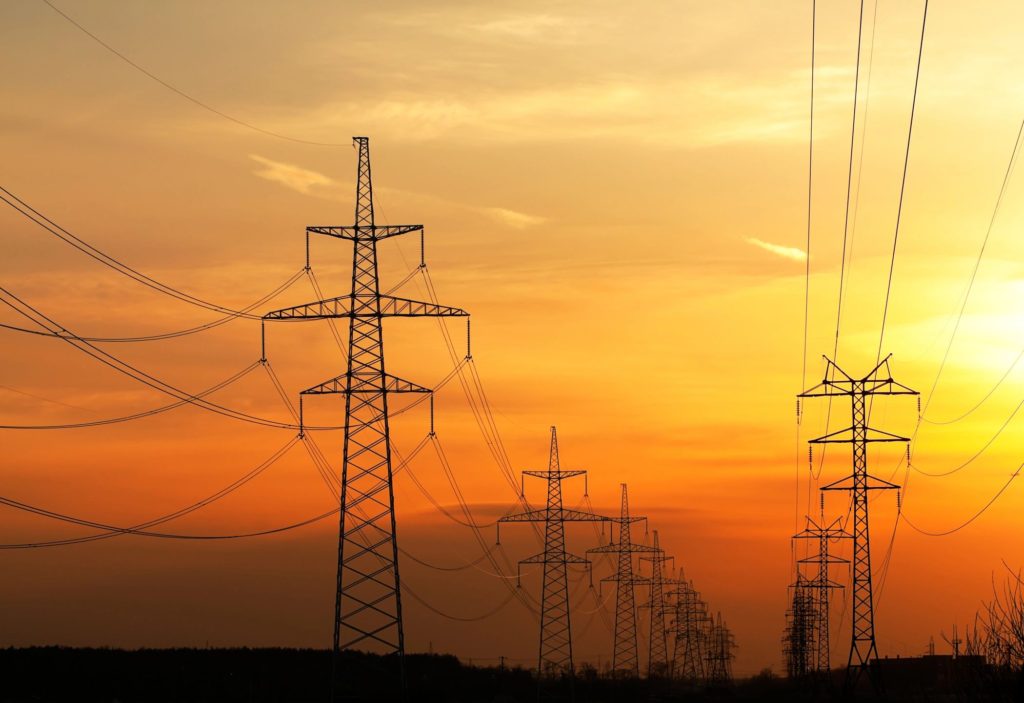
Blog: Pennsylvania Marcellus Shale Tax
Last month, the Pennsylvania state Senate voted in favor of a massive tax increase as part of a plan to close the state’s $2 billion budget gap. The 26-24 vote will result in a tax hike of 571.5 million across the state, affecting over half of households in the form of increased heating bills. While the tax hike will be a great revenue raiser for the government, small businesses will face an uphill battle in the form of fewer jobs, and the suppression of the state’s newest and most vibrant revenue stream. The vast majority of the tax hike is targeted at the state’s booming natural gas industry. The nation’s largest natural gas field, the Marcellus Shale, is located in Pennsylvania. The new severance tax will raise an estimated $100 million each year with an effective tax rate for 2017-18 of 2 cents per thousand cubic feet of natural gas. The state’s natural gas industry has been a target of Pennsylvania Governor Tom Wolf throughout his tenure as Governor. In February, he proposed a 6.5 percent tax on the value of the production. In 2015, he had proposed a 5 percent production tax, plus 4.7 cents per thousand cubic feet. Despite the fact that Governor Wolf has been forced to settle for roughly half of his desired tax rate, there are still significant problems with targeting the natural gas industry. The severance tax is far from the steady revenue source needed to reduce the deficit. The natural gas industry is cyclical with periods of robust growth and decline. No one knows how long the state can depend on revenue from the Marcellus Shale developers. Supporters of the tax have pointed to the fact that Texas also levies a similar tariff on their natural gas. However, as Elizabeth Stelle from the Commonwealth Foundation points out,
“If Texas is really the model to follow, then any severance tax proposal should also include eliminating the corporate income tax, eliminating the personal income tax and streamlining Pennsylvania’s regulatory regime. Sadly, that’s not the type of severance tax the governor and lawmakers want. Their idea is to raise the special tax charged to drillers—now called an “impact fee”—when the industry is already struggling with year-long permit delays for permits that do not even exist across the border in Ohio, ongoing litigation to build critical infrastructure, and the highest effective corporate tax rate in America.”
With Pennsylvanians already paying increased taxes and regulatory costs, it’s unfair to levy an additional burden on energy producers. Onerous government-imposed tariffs exist outside the free market, and not only distort the cost of labor, but tangible goods as well. Instead of clobbering hard-working Pennsylvanians with yet another tax increase, we encourage Governor Wolf to leverage the Marcellus Shale for greater investment that will create jobs.

US set to reduce carbon output without need for government mandate
Recent news has highlighted the United States pulling out of the Paris Climate Agreement, however few articles have mentioned the US’s already impressive record of reducing carbon emissions without a government mandate. According to a new study by Morgan Stanley, the United States may meet the outlined minimums of the Paris Climate Agreement despite no longer being a party to the accord. In their recent analysis, the brokerage firm found that technology is steadily driving down the price of these energy sources to the point that market functions will eventually make renewable energy an equitable possibility for large-scale power.
“We project that by 2020, renewables will be the cheapest form of new-power generation across the globe,” Morgan Stanley analysts said in a report published last Thursday. According to the report, the US is to exceed the Paris commitment of a 26-28 percent reduction in its 2005-level carbon emissions in the next three years. The report points out that better understanding of wind conditions and redesigned wind-turbine blades have made wind power an increasingly viable power option.
Many in the environmentalist community will point to the cost reduction as an argument in favor of maintaining the United States position in the Paris Climate Agreement, and for continued subsidization of green projects. However, we believe that if true, these statistics render the continued government subsidization of green projects completely superfluous. The goal of green energy projects should be to achieve competitiveness based on the merits of the technology, not financial support as an “approved power source” from the government.
The United States’ exit from the climate treaty has been treated as an environmental calamity by supporters of renewable energy, pointing to German Chancellor Angela Merkel’s steadfast support for the treaty as a roadmap for the US to follow. Interestingly, the math doesn’t favor that argument. The U.S. actually reduced its overall greenhouse emissions at a faster rate than Germany over the last decade. American emissions fell by 9.9 percent between 2005 and 2015, as compared with Germany’s 8.8 percent, even though the U.S. was not a signatory to any carbon emissions treaty during that period.
FBAE believes that it is critical for the United States to be judicious in the extent to which it tethers itself to the climate goals of other nations. Climate treaties place an undue burden on the American economy, and in the case of reducing carbon emission is proving to be unnecessary.

Blog: President Trump Kicks Off “Energy Week”
President Trump has designated the last week of June as “Energy Week”. Policy weeks have become a trademark of the Trump presidency, and for family businesses, the consequences of this Energy Week could be welcomed by many who are plagued with volatile energy costs. The common thread of Energy Week will be a renewed reliance on traditional energy sources, and dominance of U.S.-based fuels in the export market. The reversal of Obama-era energy policy was a key tenant of the President’s campaign, and based on his Energy Week schedule, Trump aims to make good on that promise. Now, Trump is looking forward, forging actionable plans to shape America’s energy future. In his first 150 days, the president has used his executive power to lift regulatory barriers to domestic energy production and has empowered the Interior Department to begin revisions of Obama-era fracking regulations.
The President has been outspoken on reducing regulations, providing greater access for energy extraction purposes, and encouraging energy production to help lower the cost of our energy production needs. While specifics on the President’s Energy Week plans are scarce, it is known that he will discuss oil and natural gas exports with Indian Prime Minister Narendra Modi when he hosts here today at the White House. On Tuesday, EPA Administrator Scott Pruitt will appear before a Senate Appropriations subcommittee where he will deliberate on the President’s spending blueprint. Energy Secretary Rick Perry will likely offer a preview of some of the President’s priorities when he speaks Tuesday with analysts and executives at the U.S. Energy Information Administration conference in Washington – agenda here. On Wednesday, President Trump will meet with Governors and Native American tribal leaders along with Energy Secretary Rick Perry. This meeting will precede a Thursday panel in the House Natural Resources Committee that will explore energy industry access to federal lands – link here. Finally, the President Trump will host and event at the Energy Department on Thursday where he will focus on how the sale of U.S. natural gas, oil, and coal helps strengthen America’s influence globally.
While President Trump is expected to place his policy focus on traditional energy sources, he is expected to describe openings for other energy exports, including U.S. technology that harnesses power from the wind and sun, and a new generation of advanced and modular nuclear reactors. Many in the industry have argued that the licensing rules for new reactors are cumbersome and convoluted, discouraging investment in an inexpensive and environmentally friendly energy source. There are hopes that President Trump will eliminate these hurdles.
In addition to making it easier to produce traditional forms of energy, the Bureau of Land Management is currently finalizing environmental reviews to allow leasing of federal land for the purpose of installing solar energy collectors in Nevada. The Dry Lake region on Nevada could be the first federal land installation of solar power generation in the country.
Streamlining the energy permitting process and reducing regulations will drive down costs, which is welcomed news for many family-owned and operated businesses with tight margins. FBAE is hopeful that the changes highlighted during Energy Week will lift the burden that stifles job creation and holds back our economic recovery.

Blog: Energy Infrastructure in the Trump Presidency
While large-scale energy projects seem inconsequential to local family businesses, the unpredictability of a volatile energy market can financially squeeze these vital contributors to our economy. Yesterday, President Trump spoke to a crowd at the Rivertown Marina in Cincinnati, Ohio about his long-awaited infrastructure plan, providing a broad outline of his priorities. In addition to reducing permitting time for projects from 10 years to 2 years and “slashing regulations to speed up the decision-making process,” Trump has made overtures to enhance infrastructure in the energy sector. While specifics have remained scarce, the president has made clear his commitment to eliminating burdensome rules hindering oil and gas exploration.
The Rivertown comments come after Trump’s nominations of Robert Powelson, and Neil Chatterjee to FERC in May. Progress on several natural gas pipeline projects was stalled by the lack of a quorum, causing a number of energy groups to prod the President to fill the positions at FERC. Now, the commission has $50 billion in energy projects to address and is working through proposals to reform wholesale power market structures. Another large component of President Trump’s $1 Trillion plan is the completion of the Keystone XL and Dakota Access pipelines, which he cited as examples of his administration’s commitment to strengthen America’s energy infrastructure. “Nobody thought any politician would have the guts to approve that final leg,” Trump said. The White House statement indicated that Trump will dedicate $200 billion in his budget this year to energy infrastructure. The completion of these energy pipeline projects will bring welcome relief to small, family-owned businesses.
Improving America’s energy infrastructure can help to reduce energy costs for family businesses by making it easier for energy resources to come to market. Transporting crude oil via pipeline reduces the cost of transportation by 50-60 percent compared to rail transport. In addition to energy transportation infrastructure, the development of more energy efficient electrical grids will also reduce the cost of energy for family businesses across the country. As we begin to overhaul and expand our energy infrastructure it is important that we do so in a way that helps reduce energy costs prepares us for the future ways we will use energy.

Energy companies look to tech to make oil production easier and cheaper
By
When your business is subject to the whims of boom-and-bust cycles the way the oil industry is, making money with less effort is very appealing. With that in mind, oil companies are using technology to cut costs while still turning a profit in the downturn.
“This is about reshaping the industry,” said Muqsit Ashraf, energy strategy consultant with the firm Accenture. He points out tech advances can keep workers safe.
But technology changes will also affect the workforce itself.
“The profile of the employees will change,” he said. “There would be a shift in terms of head count on the field to head count that might be sitting in remote operations centers making decisions.”
Technology is replacing energy workers. For example, oilfield services company Schlumberger has estimated one of its newer, more automated drilling rigs could cut the number of work hours needed to finish a well by more than 30 percent. But in the long term, the effect on jobs is hard to predict, according to Rice University’s Mark Agerton.
“It really depends on whether the technology is going to lower the cost of extraction and make us extract more oil and gas, and hire more people to do that, or if the technology is going to allow us to replace people with machines,” he said.
A more digitized industry also means companies will need more educated, higher-skilled workers to operate new technologies.
These advances are helping drillers in Texas make money even with low oil prices. But another boom could slow the innovation. If prices shoot back up, companies might decide to revert back to more time-tested ways of moving oil.

